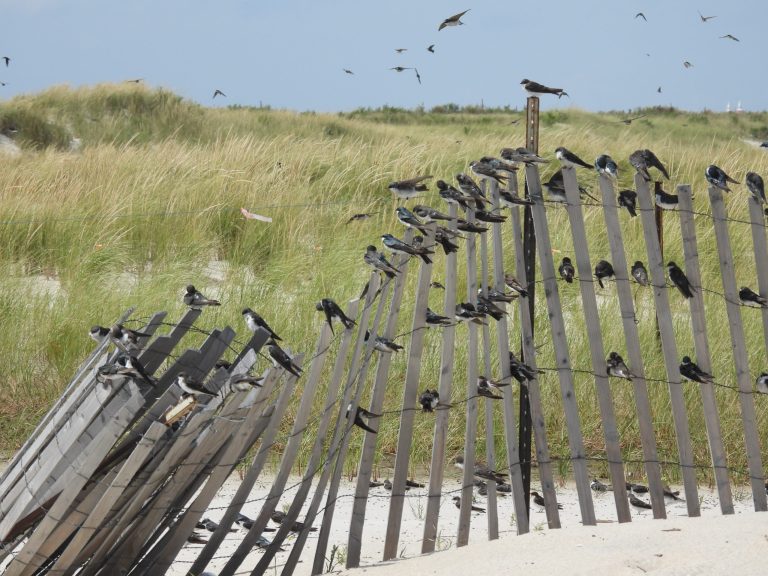
By Jennifer Wilson Pines
If you are an avid birder, as I am, or just enjoy your backyard birds, you quickly learn that there are seasons to birding. We have just moved from breeding (baby bird season) into the first wave of fall migration, the shorebirds.
Baby bird season is especially important because New York state is in the second year of a five-year Breeding Bird Atlas. Atlas efforts are made every 20 years and this is the third Atlas to be compiled, creating a wealth of data for scientists. Birders all over the state scoured the woods, beaches and backyards for signs of breeding and entered them on ebird.com, the free app from Cornell Lab of Ornithology.
It isn’t necessary to go far. I’ve recorded the progress of a pair of cardinals that have nested in a shrub in my front yard for several years. There have been years of tragedy, but this year they were successful in getting two chicks launched – not too far, just to our backyard feeders. We had an afternoon of high drama when one chick left the nest far too young to fly and was hopping around in our plum tree while its nearly hysterical parents tried to urge it back into the nest with frantic chirping.
In the backyard they joined junior Starlings, Blue jays, Grackles and House sparrows, in what often seemed like a teen drop-off center. Now that the kids are out of the house, Mom and Dad can think about eating as much as they can.
As we are lucky to live on an island sticking out into the Atlantic, we get a diverse range of shorebirds breeding or just resting up for the next leg of migration. We have many birds that breed here: Terns, Oystercatchers and Black Skimmers form huge colonies on the south shore. Gulls breed on the small islands in the Sound and marshes and bring their young to the bays once they fledge.
We are privileged to have a decent number of the endangered Piping Plovers nesting. But most of the sandpipers and plovers breed farther north and we are just a fueling stop on their migration. Many are still in breeding plumage, making ID easier, though the legions of tiny white below, brown above birds darting at the shoreline can be hard to sort out until you learn their distinguishing field marks. Some of them will winter over here, particularly on the south shore, while others are flying huge distances to South America.
The next wave, already starting to trickle in, are the warblers. Those flying jewels of spring have transformed into confusing fall warblers in shades of drab olive and brown. And they’re not sitting and singing either but darting about in search of insects to pack on ounces before long flights south. This makes them a challenge to identify and may be not the best time to start your warbler ID career.
Migration is about access to food and not staying warm, so most departing birds are insect eaters who migrate when their babies are launched and the gnats and caterpillars vanish with the cold.
After the warblers come the sparrows, some to over-winter, some to wing on through. The good news is that they look pretty much the same all year round, making identification easier. The White-throated Sparrow is a winter guest at feeders. Departing are Saltmarsh and Seaside, passing through are Savannah and White-crowned.
Last are the winter ducks, birds who think sticking their tootsies into the icy water of the Sound, bays, nearshore ocean, and unfrozen ponds is the perfect way to spend a winter vacation. Arriving in December are Buffleheads, Hooded and Red-breasted Mergansers, Scaup, Eiders, Scoters, Long-tails and others. Migratory Canada Geese and Brant also come for the winter.
Irruption years are something birders hope for. This generally happens every few years when the spruce trees in Canada produce a poor crop of cones and seeds, forcing the resident birds to come south seeking food. Last year was a big irruption, with the first Red-breasted Nuthatch reported arriving on Aug. 10, followed by a flood of Pine Siskins, Purple Finches, Redpolls and Grosbeaks to the enjoyment of birders all across the Northeast.
The cycle repeats endlessly. Next spring the winter visitors will depart and the warblers and shorebirds will arrive again. But each season brings something different, something new to see and learn, a renewed appreciation for the wonders of the natural world.






